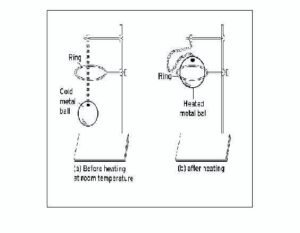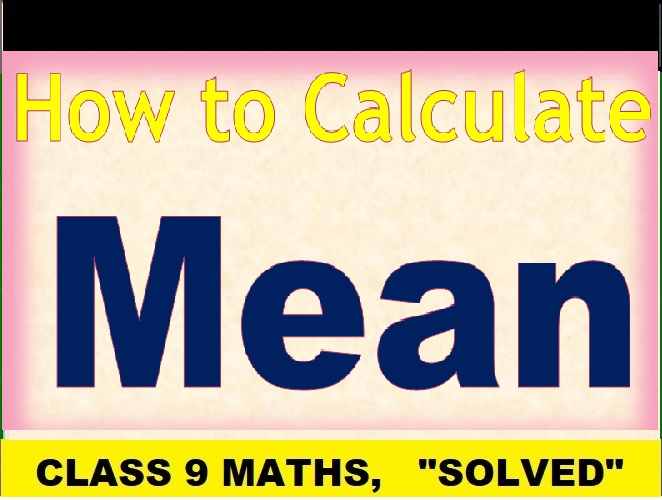Thermal Expansion And Its Applications Class-7th Goyal Brothers ICSE Physics Solutions Chapter-5(Heat)Unit-3(Thermal Expansion And Its Applications). We Provide Step by Step Answers of Objectives, Fill in the blanks, Match the following, True/False, Incorrect and Correct, Question Type answers of Chapter-5(Heat) Unit-3(Thermal Expansion And Its Applications). Visit official Website CISCE for detail information about ICSE Board Class-7.
Thermal Expansion And Its Applications ICSE Class-7th Goyal Brothers Physics Solutions Chapter-5 Unit-3
| Board | ICSE |
| Class | 7th |
| Subject | Physics |
| Book Name | Goyal Brothers |
| Chapter-5 | Heat |
| Unit-3 |
Thermal Expansion And Its Applications |
| Topic | Solution of exercise questions |
| Session | 2023-24 |
OBJECTIVE QUESTIONS
Thermal Expansion And Its Applications ICSE Class-7th Goyal Brothers Physics Solutions Chapter-5 Unit-3
Que: A. Fill in the blank spaces by choosing the correct words from the list given below :
List : gaps, expand, thermal, linear, summer
1. The expansion produced in matter due to absorption of heat energy, is called thermal expansion.
2. The increase in length of a solid due to absorption of heat energy, is called linear expansion.
3. Solids expand on heating.
4. The tonga drivers put cold water over iron rims during hot summer.
5. To avoid derailment of train, small gaps are left in between the rails.
Que: B. Statements given below are incorrect. Write the correct statements :
Question: 1. The increase in area of a solid when heated, is called cubical expansion.
Answer: The increase in area of a solid when heated, is called superficial expansion.
Question: 2. On heating, the bimetallic strip (brass and iron) bends in such a way that the brass is on the inner side while iron is on outer side of the bend.
Answer: On heating, the bimetallic strip (brass and iron) bends in such a way that the invar is on the inner side while iron is on outer side of the bend.
Question: 3. To avoid derailment of train, the rails are fixed tightly, leaving no space for expansion or contraction.
Answer: To avoid derailment of train, the rails are fixed tightly, leaving some space for expansion or contraction.
Question: 4. The girders supporting the bridge are fixed in the walls of the pillars.
Answer: The girders supporting the bridge are not fixed in the walls of the pillars.
Question: 5. The metallic wires contract during summer and can break.
Answer: The metallic wires contract during winter and can break.
Que: C. Write ‘True’ or ‘False’ for the following statements :
| Statements | True/False |
| 1. The increase in volume of a substance (solid, liquid or gas) when heated, is called cubical expansion. | T |
| 2. Equal length of different solids expand by equal amount when heated equally. | F |
| 3. The iron rim to be mounted on a wooden cart wheel has a slightly smaller diameter than the wooden wheel. | T |
| 4. Cement floor is laid as one block. | F |
| 5. When a gas is heated, its molecules move faster and the collisions become more violent, and thus they move away from each other. |
T |
Que: D. Tick (√) the most appropriate answer :
1. The increase in length of a solid when heated is called :
(a) thermal expansion
(b) liner expansion
(c) superficial expansion
(d) cubical expansion
Answer: option (b) liner expansion is correct.
2. The increase in volume of a substance when heated, is called :
(a) thermal expansion
(b) liner expansion
(c) superficial expansion
(d) cubical expansion
Answer: option (c) superficial expansion is correct.
3. Small gaps are left between railway lines because :
(a) rails of very long length are not available
(b) expansion of rails during summer
(c) contraction of rails during summer
(d) both (b) and (c)
Answer: option (a) rails of very long length are not available is correct.
4. The bimetallic strip made from brass and iron bends when heated. When it’s bent the shape is :
(a) brass on the outer side
(b) iron on the inner side
(c) iron on the outer side
(d) both (a) and (b)
Answer: option (d) both (a) and (b) is correct.
5. Which of the following expand(s) in volume only when heated ?
(a) Solid
(b) Liquid
(c) Gas
(b) Both (b) and (c)
Answer: option (c) Gas is correct.
Que: E. Match the statements in Column A, with those in Column B :
| Column A | Column B |
| 1. Expansion produced in matter due to the absorption of heat energy. | (a) Linear expansion |
| 2. Increase in the area of a solid only on the absorption of heat energy. | (b) Gas |
| 3. The kind of matter which expands most on heating. | (c) Superficial expansion |
| 4. Increase in the volume of a solid on the absorption of heat energy. | (d) Thermal expansion |
| 5. Increase in the length of a substance on the absorption of heat energy. |
(e) Cubical expansion |
Answer:
| Column A | Column B |
| 1. Expansion produced in matter due to the absorption of heat energy. | (a) Thermal expansion |
| 2. Increase in the area of a solid only on the absorption of heat energy. | (b) Cubical expansion |
| 3. The kind of matter which expands most on heating. | (c) Gas |
| 4. Increase in the volume of a solid on the absorption of heat energy. | (d) Superficial expansion |
| 5. Increase in the length of a substance on the absorption of heat energy. | (e) Linear expansion |
STUDY QUESTIONS
Thermal Expansion And Its Applications ICSE Class-7th Goyal Brothers Physics Solutions Chapter-5 Unit-3
Question: 1. What do you mean by thermal expansion?
Answer: Thermal expansion is the tendency of matter to change in shape, volume, and area in response to a change in temperature. Temperature is a monotonic function of the average molecular kinetic energy of a substance.
Question: 2. Name the kinds of expansion of matter. Define all the kinds briefly?
Answer: The expansion of matter by absorption of heat energy is known as thermal expansion. Thermal expansion can be categorized into three types: 1) Linear expansion 2) Superficial expansion 3) Cubical expansion. Linear expansion: The increase in the length of matter by the absorption of heat energy.
Question: 3. What conclusion do you get from Gravesande’s Ring and Ball experiment? Explain briefly.
Answer: The apparatus used in the experiment consists of a metal ball suspended by a metal chain and a ring connected to the stand. The inner diameter of the ring is the same as the outer diameter of the ball, so that ball can easily pass through the ring.
 If we heated the ball on a Bunsen flame for two minutes and try to pass the ball through the ring, we can see that ball does not pass through the ring.
If we heated the ball on a Bunsen flame for two minutes and try to pass the ball through the ring, we can see that ball does not pass through the ring.
Conclusion:-
- The ball is not able to pass through the ring because it got expanded on heating.
- Gravesande’s ring and ball experiment conclude that solids will expand on heating.
Question: 4. Why does the iron rim to be mounted on a wooden cart wheel have a slightly smaller diameter than the wooden wheel?
Answer: The iron rims will undergo thermal expansion in the summer season. Thermal expansion is the expansion happening in substances when heated. If the iron rims are expanding, then they will get loosened from the wooden wheel. To avoid this kind of situation iron rims are mounted to the wooden wheel in a way that iron rims are having lesser diameter than the wheel to hold them tightly after expansion also.
Question: 5. Why are small gaps left in between the rails?
Answer: These gaps which are of the order of a few millimeters, are provided to allow room for the rails to expand the rise in temperature due to the atmospheric temperature as well as the friction caused by running of train. All materials expand when heated and contract when cooled.
Question: 6. Why are the girders supporting the bridge not fixed in the walls of the pillars?
Answer: The girders used to support the bridges will expand on heating and contract on cooling. If the girders are attached to the walls of the pillars, the walls will get damaged because of the expansion and contraction of the girders. The girders are fixed on the rollers leaving a small space in between for expansion or contraction.
Question: 7. Why are the telephone of telegraph wires laid in summer kept slightly loose, while in winter they are kept tight?
Answer: The telephone and telegraph wires are metallic wires. The metallic wires undergo thermal expansion in summer and sag down. Then the chances of getting contacted with other wires during the storm and causing a serious breakdown are high. To avoid breakdowns, telephone and telegraph cables are laid loosely to allow contraction in winter. The wires will be laid tightly during winters for allowing them to expand in summer.
Question: 8. Describe principle and function of fire alarm.
Answer: A fire alarm is a unit made of several devices, which uses visual and audio signalization to warn people about a possible fire, smoke, or carbon monoxide occurrence in the area of coverage. Fire alarms are usually set in fire alarm systems to provide zonal coverage for residences and commercial buildings.
Question: 9. (a) Define thermal expansion of liquids.
Answer: When liquid is heated, both liquid and container undergo a change in their volume. The intermolecular force of attraction in liquids is weaker as compared to solids. If the liquid is heated, molecules will start to vibrate faster because of their weak intermolecular force between each other. When molecules are vibrating faster, they need more space to occupy, which leads to the expansion of liquids.
(b) How can you say different liquids have different rates of expansion for the same rise in temperature?
Answer: Experiment to investigate the expansion rates of different liquids at the same rise in temperature:
- Take three similar bottles and fill one with ethyl alcohol, second with water and the third with olive oil.
- Fix soda straws in the bottles with the help of a cork.
- Mark the level of each liquid in soda straw.
- Place all three bottles in a trough containing hot water.
Observation:
- It is observed that increase in level of liquids were different after five minutes.
- All the three bottles were on same temperature as that of hot water, then also the expansion in liquids were different.
- Hence we can conclude that different liquids have different rates of expansion for the same rise in temperature.
Question: 10. (a) Define thermal expansion of gases.
Answer: Gases are having large interparticle space and weak interparticle force of attraction. When the gas is heated, its molecules will start moving faster and they collide with each other more violently. The violent collision of faster-moving molecules makes them away from each other and it causes the volume to increase. This increase in the volume of gas when heated is the thermal expansion of gases. The thermal expansion happening in gas is cubical expansion.
(b) How can you say expansion of gases is very large as compared to the solids of the liquids?
Answer: Experiment to prove expansion in gases is very large as compared to solids or liquids:
- Take a clean empty bottle and fill it with hydrogen gas.
- Fix a deflated rubber balloon over the mouth of the bottle.
- Place the bottle in a trough of hot water for a few minutes.
Observations:
- After a few minutes, we can observe that the balloon gets inflated.
- Hence we can conclude that the expansion in gases is very large as compared to solids or liquids.
— : end of Thermal Expansion And Its Applications ICSE Class-7th Goyal Brothers Physics Solutions Chapter-5 Unit-3 :–-
Return to- ICSE Class -7 Goyal Brothers Physics Solutions
Thanks
Please share with your friends if you find it useful


